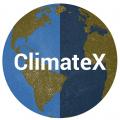Description
What are the perfect climate conditions for life on Earth?
In this video, Sarah Seager looks at planets outside our solar system and compares their conditions to that of Earth.
Sarah illustrates the “goldilocks zone” of planets - where conditions ranging from temperature and gaseous level are ideal for life.
Topics






